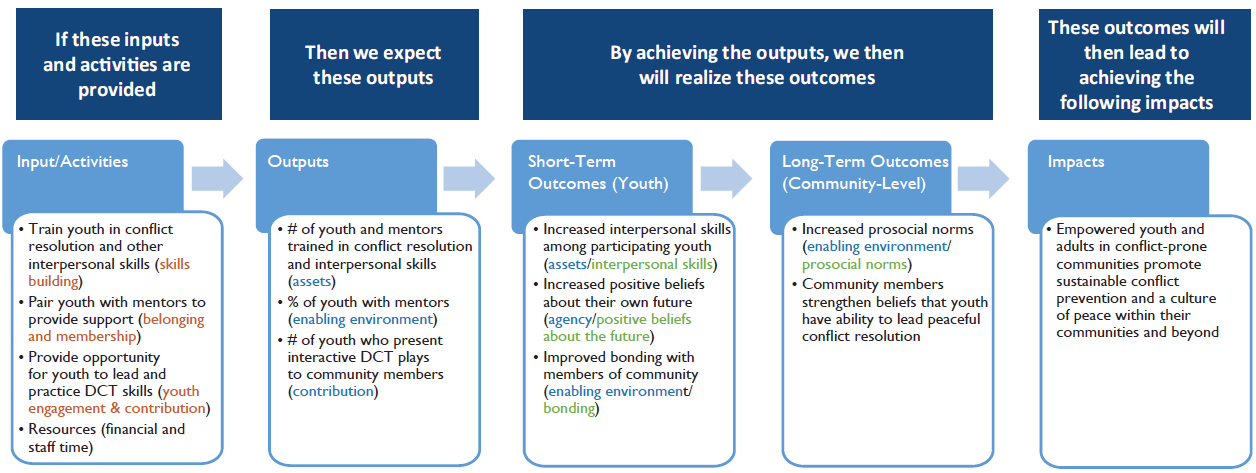Phase Three: Finalizing the Program Logic Model
Key Question
How can I use the PYD Measurement Framework to develop my Logic Model?
Now that you’ve selected primary outcomes and research questions, as well as program features and program beneficiaries, you have to make them fit together. The assumptions underlying the choice of features and beneficiaries should be realistic and connected, so that the desired outcomes are accomplished and research questions can be answered.
Many program designers and evaluators use a theoretical framework to organize how their program features will link to intermediate and longer-term outcomes. These frameworks are also the basis of M&E plans. These frameworks may be referred to as the Logic Model, Theory of Change, or Logframe. Often, these terms convey different things to different people, but the underlying objective is similar: to define the results and logical strategy underlying a program or project through “if… then” statements (If I do X, then I expect Y to occur).
This discussion is based on a Logic Model, but these guidelines can refer to all theoretical frameworks. The Logic Model documents and graphically illustrates the program’s components, both those within the control of the project implementers (inputs, activities and outputs) and those outside the control of the implementers but still within their influence (outcomes and impact).
Strong evidence or theory of change is needed to lay out how the program activities are linked to outputs, outcomes and impact. A good practice for designing program logic models is to collaborate with as many key stakeholders as possible, seeking their input and addressing their concerns. Not only does this ensure their buy-in, but it also creates accountability across stakeholders for the program and its outcomes. Additionally, consult the literature to understand effectiveness of the interventions you are interested in using.
You can use the PYD Framework to create the logic model (Figure 5) by connecting the PYD domains and features (inputs and activities) with the PYD outcomes of interest, which are tied to the indicators. This will help illuminate outputs, outcomes and impacts, and ultimately the sector-specific or PYD outcomes of interest (outcomes and impacts)
Figure: Simple Logic Model for YTP using PYD Framework

Do you have more questions about the toolkit? See our Frequently Asked Questions (FAQ) section or visit the PYD glossary.












